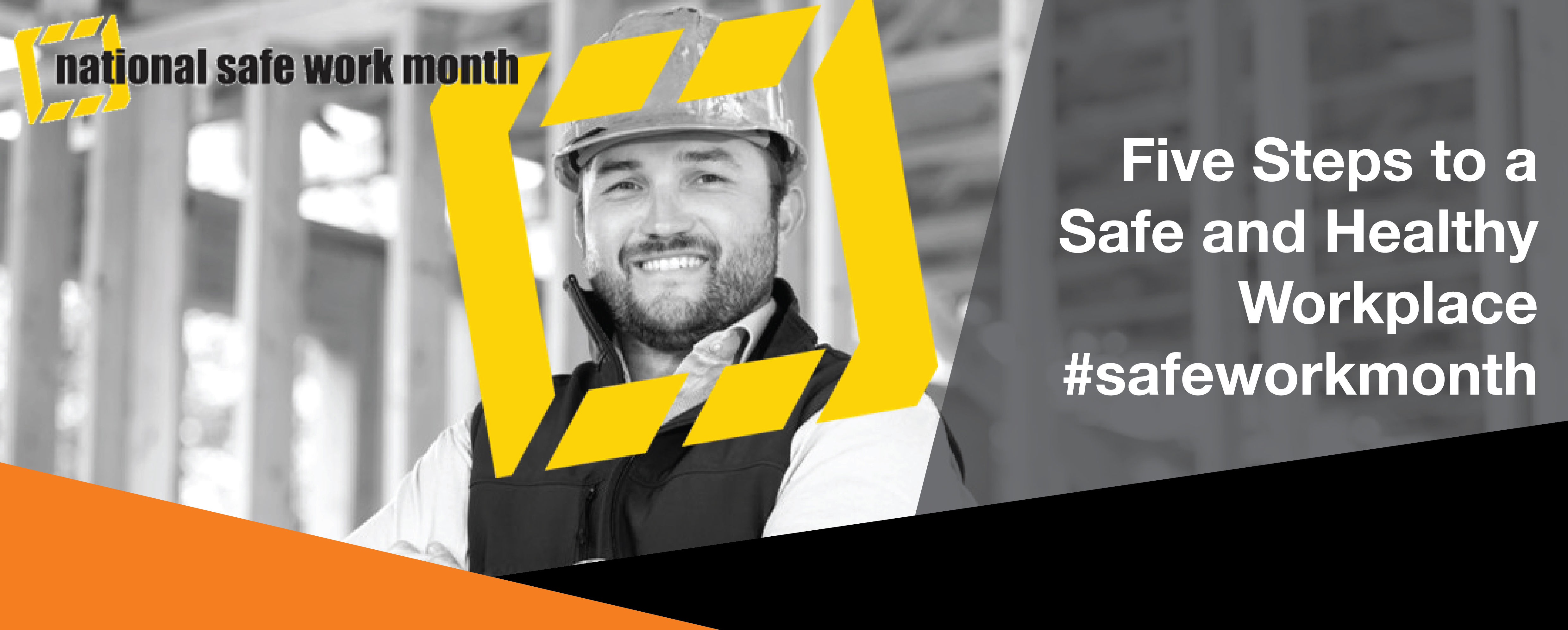
Five Steps to a Safe and Healthy Workplace #safeworkmonth
October is National Work Safe Month - a time to commit to building safe and healthy workplaces for all Australians!
Here are five steps to a safe and healthy workplace:
Design safe
Well-designed work is inherently safer and healthier because hazards and risks are eliminated before they enter the workplace. Designing out hazards and risks saves lives and makes the job more efficient. The Principles of Good Work Design handbook provides practical guidance on how to design your work and your workplace so it’s healthier and safer.
Consider
- What are the physical, mental and emotional demands associated with getting the work done?
- Where is the work actually done and what is the working environment like?
- What machines, equipment, materials, substances, vehicles and structures used?
- Who’s doing the work and do they have the tools, skills and resources they need to do it safely?
Source safe
Make sure the tools and equipment you have on the job are fit for the purpose. Cheap equipment, machinery and materials that break easily can be dangerous and are expensive to fix. Investing in equipment that is inherently safe – like a tractor with built-in rollover protection – protects workers from harm from the outset.
Consider
- When buying materials and equipment, have you consulted the people who use them?
- Are you buying equipment that’s designed for the task, fit for purpose, and suited to your unique workplace?
- Are you sourcing from overseas and inadvertently importing risks?
Use safe
Make work health and safety part of your daily conversations and involve everyone – especially those actually doing the work. Look out for your workmates and don’t hesitate to stop work if you feel it’s not safe.
Consider
- Have you done a risk assessment?
- If you know the risks are the right controls in place?
- Is a safe work method or quick safety check always done before work starts?
- Has everyone been trained appropriately?
- Is the equipment being used as intended? Does everyone feel confident using it?
- Is personal protective equipment required and does everyone know how to wear it?
- Is the emergency plan up to date and understood?
Keep safe
Damaged or poorly maintained equipment like broken ladders, split electrical cables and frayed ropes can cause serious injuries or death. Similarly, inefficient and outdated systems and equipment can become a hazard to both physical and mental health.
Consider
- Has broken or damaged equipment been replaced?
- Are your maintenance schedules up to date?
- Can workers report breakdowns and malfunctions easily?
- Are your systems and equipment contemporary?
- Can kit be cleaned and stored appropriately?
Repeat
Your safety journey should never end – making sure your workplace is healthy and safe is a continuous cycle of improvement.
Consider
- Are your current risk controls still working?
- Are there new or emerging risks which need to be controlled?
- Have you made sure you are also controlling uncommon but potentially catastrophic risks?
- Have you investing your work health and safety resources where there is the greatest potential for reducing harm?
- Are you ready willing and able to respond to any early warning signs?
SWF Group | "Safety at Work First!"
#SafeWorkMonth #SafetyAtWorkFirst


 Australian Owned & Operated
Australian Owned & Operated






